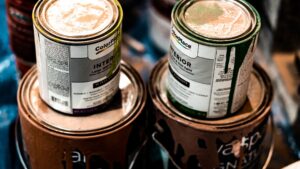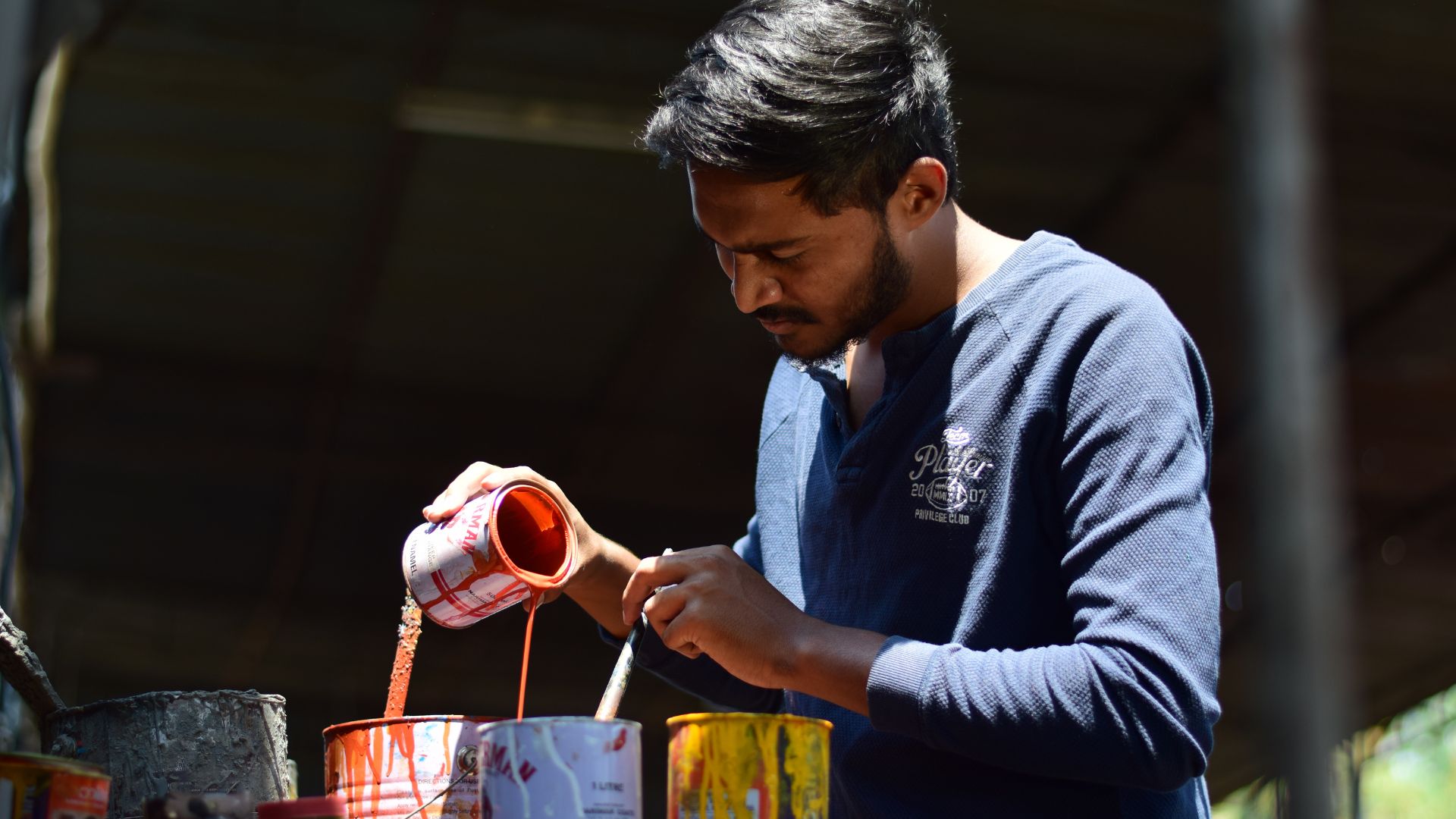Creating a stunning mural involves more than just artistic vision; it requires the right technique, especially when it comes to mixing paint. Whether you’re an experienced muralist or a beginner, understanding how to mix paint for a large-scale project is crucial. Let’s dive into some helpful tips to ensure your mural painting process goes smoothly.
Understanding the Basics
When tackling a large mural, consider using acrylic or latex paint due to their durability and ease of use. Before mixing, gather all the necessary supplies: paintbrushes, paint, mixing containers, and a palette.
Mixing Paint Colors
1. Start with Primary Colors
Begin by creating your desired colors from primary hues: red, blue, and yellow. Experiment by mixing these colors to achieve the shades you need for your mural.

2. Maintain Consistency
To ensure color consistency across the mural, mix larger quantities of paint in one go. Use a large bucket or container to mix enough paint for a specific section.
3. Use the Right Ratios
Achieve consistent colors by following a 2:1 ratio when mixing paint. Add two parts of the primary color to one part of the secondary color until you reach the desired shade.
Blending Techniques
1. Test Your Colors
Before applying the paint to the mural, test it on a small section of the wall. This helps confirm the color and allows adjustments if needed.
2. Blend Seamlessly
Blend colors smoothly by using a technique called “feathering.” This involves gently overlapping the colors while they’re still wet, creating a seamless transition.
3. Consider the Environment
Take note of the environment where the mural will be displayed. Lighting conditions can affect the perception of colors, so test your colors in both natural and artificial light.
Maintenance and Cleanup
1. Proper Storage
Store leftover mixed paint in airtight containers to prevent drying out. Label each container with the color and mixture ratio for future reference.
2. Cleaning Brushes
After each painting session, clean your brushes thoroughly with water or appropriate cleaning solutions to maintain their quality.
So,…
Mixing paint for a large mural demands patience, precision, and creativity. By understanding color theory, using the right ratios, and employing blending techniques, you can bring your artistic vision to life on a grand scale.
Remember, practice makes perfect, so don’t be afraid to experiment and refine your mixing and painting techniques.
External Resources:
Maintaining Quality and Creativity in Your Mural Painting Journey
Choosing the Right Tools
Selecting the appropriate tools for a mural painting project significantly impacts the outcome. Opt for high-quality brushes and rollers designed for larger surfaces. Consider using extendable handles to reach higher areas comfortably.
Preparing the Surface
Ensure the wall or surface is clean, smooth, and primed before starting. A clean surface allows the paint to adhere better and ensures the longevity of your mural.
Planning and Sketching
Before diving into paint mixing, plan your mural design meticulously. Sketch the outline directly on the wall or create a scaled-down version on paper to guide your painting process.
Creating Depth and Texture
1. Layering Techniques
Incorporate depth and dimension by layering colors. Start with base layers and gradually add details and highlights.
2. Texturizing Tools
Experiment with sponges, rags, or different brush strokes to add texture and visual interest to your mural.
Scaling Proportions
Maintain proper proportions and perspective, especially when working on a larger scale. Step back occasionally to assess the overall look and make adjustments as needed.
Collaborating and Seeking Feedback
Consider involving others in your project for additional perspectives. Collaborating with fellow artists or seeking feedback from viewers can offer valuable insights and improve the final result.
Protecting Your Artwork
1. Sealing the Mural
Once completed, protect your mural from weather elements and vandalism by applying a clear, UV-resistant sealant.
2. Regular Maintenance
Schedule periodic checks and touch-ups to preserve the vibrancy and quality of your mural over time.
Embracing Creativity and Expression
Remember, painting a mural is an expressive art form. Embrace your creativity, experiment with techniques, and let your artistic expression shine through your work.
Conclusion
Painting a large mural is a rewarding endeavor that requires careful planning, attention to detail, and a passion for creativity. By mastering paint mixing techniques, utilizing the right tools, and nurturing your artistic vision, you can bring beauty and inspiration to any space through your mural artwork.
Don’t be afraid to explore new methods, learn from experiences, and continue honing your skills. Every stroke of paint contributes to your artistic journey. Enjoy the process and let your imagination guide you toward creating remarkable murals that captivate and inspire.
External Resources:
Comparison tabular
| Aspect | Acrylic Paint | Latex Paint | Oil Paint |
|---|---|---|---|
| Durability | Moderate | High | High |
| Drying Time | Quick | Moderate | Slow |
| Surface Compatibility | Versatile | Mostly indoor surfaces | Versatile |
| Ease of Cleanup | Water-based, easy cleanup | Water-based, easy cleanup | Requires solvents for cleanup |
| Color Mixing | Easy | Easy | Complex |
| Brush Compatibility | Works with most brushes | Works with most brushes | Requires specific brushes |
| Texture/Finish | Matte or glossy | Matte or glossy | Glossy |
| Environmental Impact | Less harmful | More eco-friendly option | Requires careful disposal |
This table highlights key differences between popular paint types used in mural painting, aiding artists in making informed choices based on their project needs and preferences.
Wrapping up
Painting a mural is an incredible way to add beauty, meaning, and creativity to spaces, turning walls into captivating works of art. Remember, the process of mixing paint for a mural involves not just colors but also passion, dedication, and a touch of artistic flair.
Whether you’re using acrylic, latex, or oil paints, the key is to experiment, practice, and enjoy the journey. Embrace mistakes as learning opportunities and let your imagination guide your brush strokes.
From preparing the surface to choosing the right tools, blending colors, and preserving your masterpiece, each step contributes to the story your mural will tell. So, gather your brushes, mix your paints, and let your creativity flow freely onto the canvas of walls, enriching the world with your unique artistic expression.
Happy painting!

For over a decade, I’ve been Mike, an artist, crafter, and designer deeply immersed in the Croc world. I thrive on crafting unique, size-inclusive patterns, fostering creativity, and sharing them on ktforum.com. My designs aim to ignite your creative spark and delight you, ensuring clarity and ease of use through rigorous testing. Join me in expressing your creative flair and showcasing your craft with joy.
Related Posts
- Can you paint over existing murals on the wall
Revamping a space with fresh paint is a fantastic way to inject new life into…
- Mixing Wall Paint for Canvas: Exploring Creativity Beyond Norms
When it comes to art, the canvas is a blank space waiting to be transformed…
- Can wall paint on canvas be used for large-scale artworks
Absolutely. Painting on canvas with wall paint can be a fantastic way to create large-scale…
- Mixing Wall Paint with Other Types for Canvas Art: Exploring Possibilities
When it comes to creating art, the canvas is your playground, and experimenting with different…

